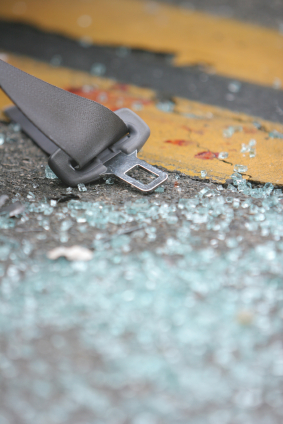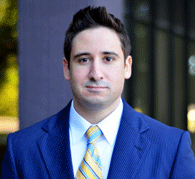
NOTE: This article was updated to reflect 2020 changes in Illinois law with passage of Public Act 101-173. These changes became effective on January 1st, adjusting the Illinois statutes governing reckless homicide charges and Scott’s Law violations.
The courts treat most accidents as a matter of negligence. The person who is responsible for the accident is considered at fault, or liable. Anyone who is injured or killed by the person at fault can recover damages in a civil action for personal injury or wrongful death. Since the person responsible did not intend the outcome, he isn’t charged with a crime.
But in some instances, even though the person responsible for the accident didn’t intend the outcome, he is prosecuted. A person who causes an accident resulting in the death of another can be charged with reckless homicide. This offense is a Class 3 felony, with a sentencing range of 2 to 5 years in the Illinois Department of Corrections.
Reckless homicide is frequently charged in motor vehicle accidents resulting in a fatality. Combined with the requirement of reckless conduct, the offense is found in the Criminal Code – unlike most other moving violations, which are found in the Vehicle Code.
The statute for reckless homicide is 720 ILCS 5/9-3. The statute says the following:
A person who unintentionally kills an individual without lawful justification commits manslaughter if his acts whether lawful or unlawful which cause the death are such as are likely to cause death or great bodily harm to some individual, and he performs them recklessly, except in cases in which the cause of death consists of the driving of a motor vehicle or operating a snowmobile, all-terrain vehicle, or watercraft, in which case the person commits reckless homicide.
See 720 ILCS 5/9-3(a).
Reckless Homicide Elements, Examples, & Penalties
The statute can seem confusing because it applies to manslaughter and reckless homicide. Basically, both offenses are charged when a person is killed because of the reckless conduct of another, and the elements of each offense are the same. However, in cases where the offender killed someone while driving a motor vehicle, then the offense is called reckless homicide as opposed to involuntary manslaughter. Involuntary manslaughter applies in most other situations where the offender accidentally kills someone – with a dangerous weapon or firearm, for example.
Reckless homicide can be charged alone, or in combination with other offenses. For example, the prosecutor can charge the defendant with reckless homicide and also aggravated driving under the influence (625 ILCS 5/11-501(d)(1)(F)). The sentencing for aggravated DUI involving a fatality is 3 to 14 years in the penitentiary, with probation possible only in exceptional circumstances.
There are certain circumstances in which reckless homicide is enhanced with a more serious penalty.
Wherever the defendant committed reckless homicide on a public thoroughfare where children were going to and from school with a school crossing guard present, the offense is enhanced to a Class 2 felony with a sentencing range of 3 to 14 years in prison. See 720 ILCS 5/9-3(e-2). Note that the statute does not require the person killed to be either a child or a school crossing guard. It can be anyone. It is the location of the offense causes the enhancement.
The penalties for this offense on a public thoroughfare with school children and a crossing guard are doubled where the defendant kills two or more persons. See 720 ILCS 5/9-3(e-3). In this case, defendant would be sentenced to 6-28 years incarceration.
If the offense of reckless homicide occurs in a work zone (defined in 625 ILCS 5/11-605.1) or the defendant failed or refused to comply with a lawful traffic control order from a police officer or traffic control aide, then the offense is also a Class 2 felony with a sentencing range 3-14 years imprisonment. See 720 ILCS 5/9-3(e-7).
Again, the penalties are doubled for this offense where it occurs in a work zone or after failing or refusing to obey a traffic control order and two or more people are killed: 6-28 years in the Department of Corrections. See 720 ILCS 5/9-3(e-8).
Where the defendant uses a motor vehicle on an incline in a roadway such as a railroad crossing, bridge approach, or hill, and causes the vehicle to become airborne, the penalty is a Class 2 felony where two or more persons are killed. See 720 ILCS 5/9-3(e-9). But unlike the previous examples, this is treated by the statute as an ordinary Class 2 felony. The standard penalties are 3 to 7 years imprisonment.
The legislature also enhanced the penalty for reckless homicide based on the status of the victim. In cases in which the victim is a peace officer killed in the performance of his or her duties, the penalty is a Class 2 felony (3-7). See 720 ILCS 5/9-3(e-10).
And similarly, if the victim of the offense is a family or household member of the accused, then the penalty is a Class 2 felony with a possible 3-14 years in the Department of Corrections. See 720 ILCS 5/9-3(f). A family or household member is generally a person who is related to the accused through a dating relationship, past or present, or familial relationship such as a marriage, or someone who shared a residence. It is specifically defined by section 725 ILCS 5/112A-3.
If the prosecutor charges the defendant with reckless homicide for a death that occurs in a school zone as defined by 625 ILCS 5/11-605, or a work zone as defined by 625 ILCS 5/11-605.1, the State may be entitled to an evidentiary presumption. Under these circumstances, if children are present in the school zone or workers are present in the construction zone, and the defendant was speeding 20 MPH over the posted limit, or driving under the influence, then the court can infer that he was reckless. See 720 ILCS 5/9-3(e-11).
If the defendant committed reckless homicide and also commits a Scott’s Law violation (eg, failure to “move over,” change lanes or slow down for an emergency vehicle under 625 ILCS 5/11-907(c)), then the offense is also a Class 2 felony with at least 3 years and at most 14 years imprisonment. See 720 ILCS 5/9-3(e-12). And, consistent with the rest of the statute, if the defendant kills two or more persons, then the penalties are double, providing a minimum of 6 and a maximum of 28 years incarceration. See 720 ILCS 5/9-3(e-13).
Additionally, the trier of fact may presume that the defendant was reckless if he committed a Scott’s law violation. See 720 ILCS 5/9-3(e-14). And whenever a person commits reckless homicide and violates Scott’s Law, it is a factor in aggravation and extended term sentencing.
Furthermore, the penalties for Scott’s Law violations also increased in 2020. The minimum penalty for the first violation increased from $100 to $250 in fines. The minimum fine for a second or subsequent violation also increased to $750 in fines. Scott’s Law violations will now carry a maximum penalty of $10,000 in fines.
All said, the court is permitted to give the accused probation. There is no mandatory prison term for reckless homicide.
If you have legal questions, contact Sami Azhari to get answers and start planning your defense.

